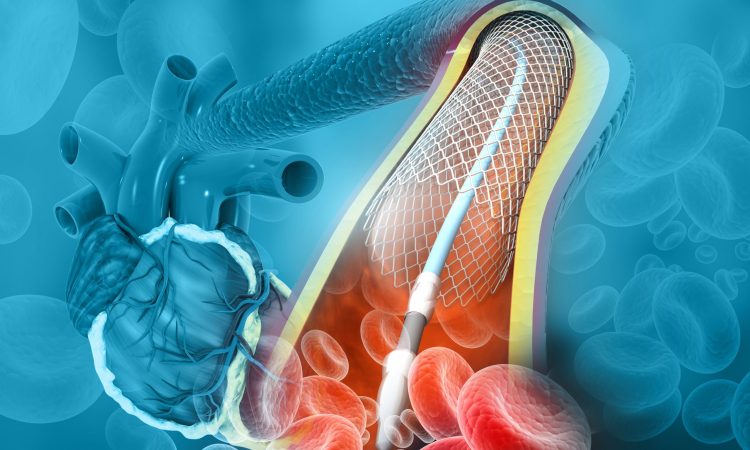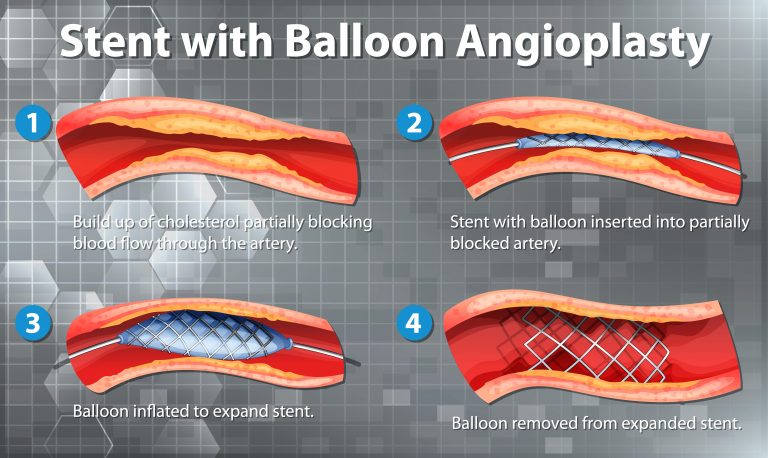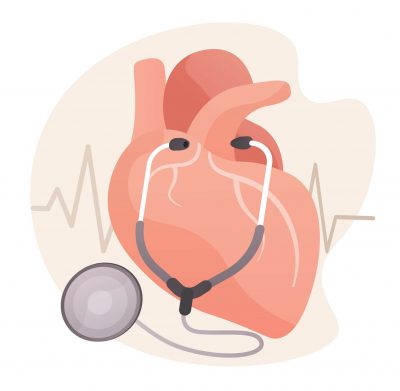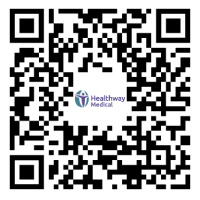Angioplasty

What is Angioplasty?
Angioplasty, also known as percutaneous coronary intervention (PCI), balloon angioplasty, or balloon angioplasty with stent, is a commonly performed procedure used to treat narrowed or blocked blood vessels, typically in the coronary arteries of the heart.
The different names reflect the various components of the procedure, such as the insertion of a stent or the use of a balloon catheter. It is often used interchangeably with the term “coronary artery stenting”, which specifically refers to the placement of a stent during the procedure.
Types of Angioplasty Procedure
Balloon Angioplasty
During an angioplasty, the patient is administered a sedative or local anaesthesia. A thin tube called a catheter is inserted through your artery to the site of the blockage, where a balloon at the end of the catheter will be inflated to widen the vessel by pushing against the walls of the blood vessel and stretching them to create more space for blood to flow through. Once the artery is stretched, the balloon is deflated and the catheter removed.
Stent placement
Most people who have an angioplasty also have a stent placed in their blocked artery during the same procedure. A stent, which looks like a tiny coil of wire mesh, supports the walls of your artery and helps prevent it from re-narrowing after the angioplasty.
The stent is inserted together with the balloon, and locks in place once the balloon is inflated, staying in the artery to support the inner walls of the blood vessel and prevent it from collapsing or becoming blocked again. This can improve blood flow and reduce the risk of complications such as heart attack or stroke.

Benefits of Angioplasty
Angioplasty can provide several benefits for people with narrowed or blocked blood vessels include:
- Improved blood flow to the heart:
by widening narrowed or blocked blood vessels, angioplasty can improve blood flow to the heart and help to prevent heart attack or other serious complications - Reduced chest pain:
help to relieve symptoms such as chest pain or discomfort, known as angina, that are caused by reduced blood flow to the heart - Avoidance of open-heart surgery:
in many cases, angioplasty can be an effective alternative to open-heart surgery, which can be a more invasive and risky procedure - Faster recovery time:
being a less invasive procedure than open-heart surgery, angioplasty typically requires a shorter hospital stay and a quicker recovery time - Improved quality of life:
angioplasty can help people to maintain a more active and healthier lifestyle by improving blood flow to the heart and reducing chest pain
Risks of Angioplasty
Just like any other medical procedures, there are risks involved in coronary angioplasty. Bleeding, infection, and damage to the blood vessel or surrounding tissue are among the most common risks associated with angioplasty and stenting.
Other possible complications include allergic reactions to the materials used in the procedure, such as the contrast dye used for imaging, and the formation of blood clots within the stent. In some situations, the artery may become narrowed or blocked again after the procedure, requiring additional treatment.
Heart attack, stroke and death are more rare but serious complications of angioplasty and stenting. It is important to discuss the risks and potential benefits of these procedures with our doctors at Nobel Heart Centre before undergoing treatment.

When will I require an Angioplasty?
Most cases that require angioplasty are people experiencing a potentially life-threatening episode, such as a heart attack. In these emergency cases, it is necessary for it to be done to minimise damage or save a life.
You may need an angioplasty if:
- The main artery that brings blood to the left side of your heart is narrowed
- Your heart muscle is weak
- You have diabetes and multiple severe blockages in your arteries
Keeping your heart healthy after an Angioplasty

Maintaining a healthy lifestyle after angioplasty is an important component in keeping your heart healthy. Here are some changes you can slowly adopt after the procedure:
- Exercise regularly
- Eat a healthy diet
- A heart-healthy diet contains plenty of good (unsaturated) fats and low amounts of bad (saturated) fats.
- Increase intake of fibre (vegetables, beans, oats)
- Reduce sugar
- Stop smoking and drinking
- Control other conditions, such as diabetes and high blood pressure
- Take medications as prescribed by your doctor



